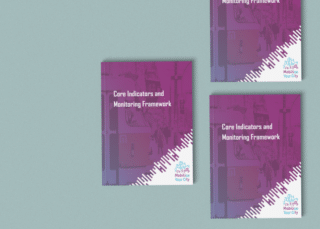Author: Mobilise Your City
Core Indicators and Monitoring Framework
This document sets out the core indicators framework and monitoring principles for the MobiliseYourCity Partnership.
Objectives
This document sets out the core indicators framework and monitoring principles for the MobiliseYourCity Partnership. Concretely, this document describes six (6) core indicators that are common to the Partnership at the global level. Additional guidance is given on how to collect data and how to report on projected and achieved results. Furthermore, the publication proposes indicators measuring the planned or built urban mobility infrastructure.
The following core indicators are described:
1. GHG emission reductions (of a ‘SUMP/NUMP scenario’) (in tCO2e) against a ‘without SUMP/NUMP scenario’ (baseline) .
2. Access (Proportion of the population living within 500 meters or less of a public transport stop with a minimum 20-minute service at peak hour, or have access to a shared mobility system with comparable service for money)
3. Safety (traffic fatalities (road, rail, etc.) in the urban area per 100.000 inhabitants. As defined by the WHO, a death counts as related to a traffic accident if it occurs within 30 days after the accident)
4. Air pollution (optional): Mean urban air pollution of particulate matter (in mg PM2.5) at road-based monitoring stations
5. Modal share (share of public transport and non-motorized modes in trips)
6. Affordability of public transport: adequacy between the selling price of public transport and the capacity of revenue contributors: users/customers, organising authorities, State, taxpayers.
